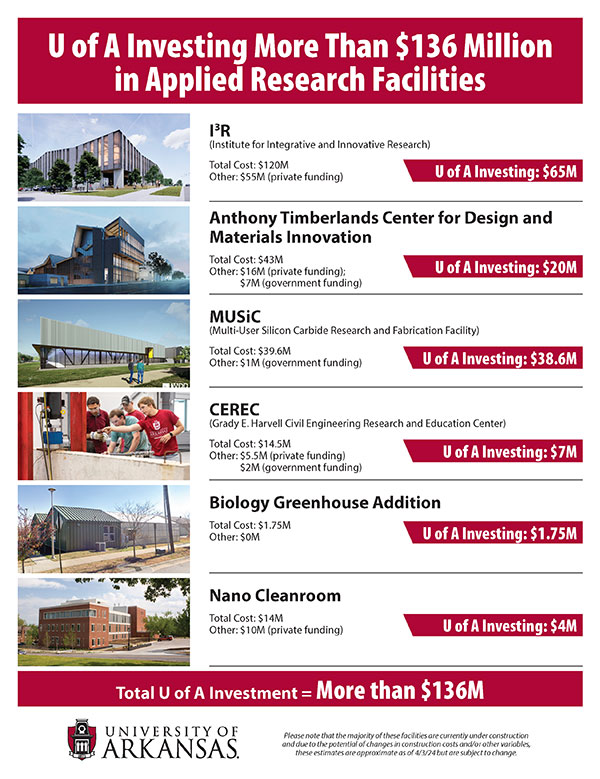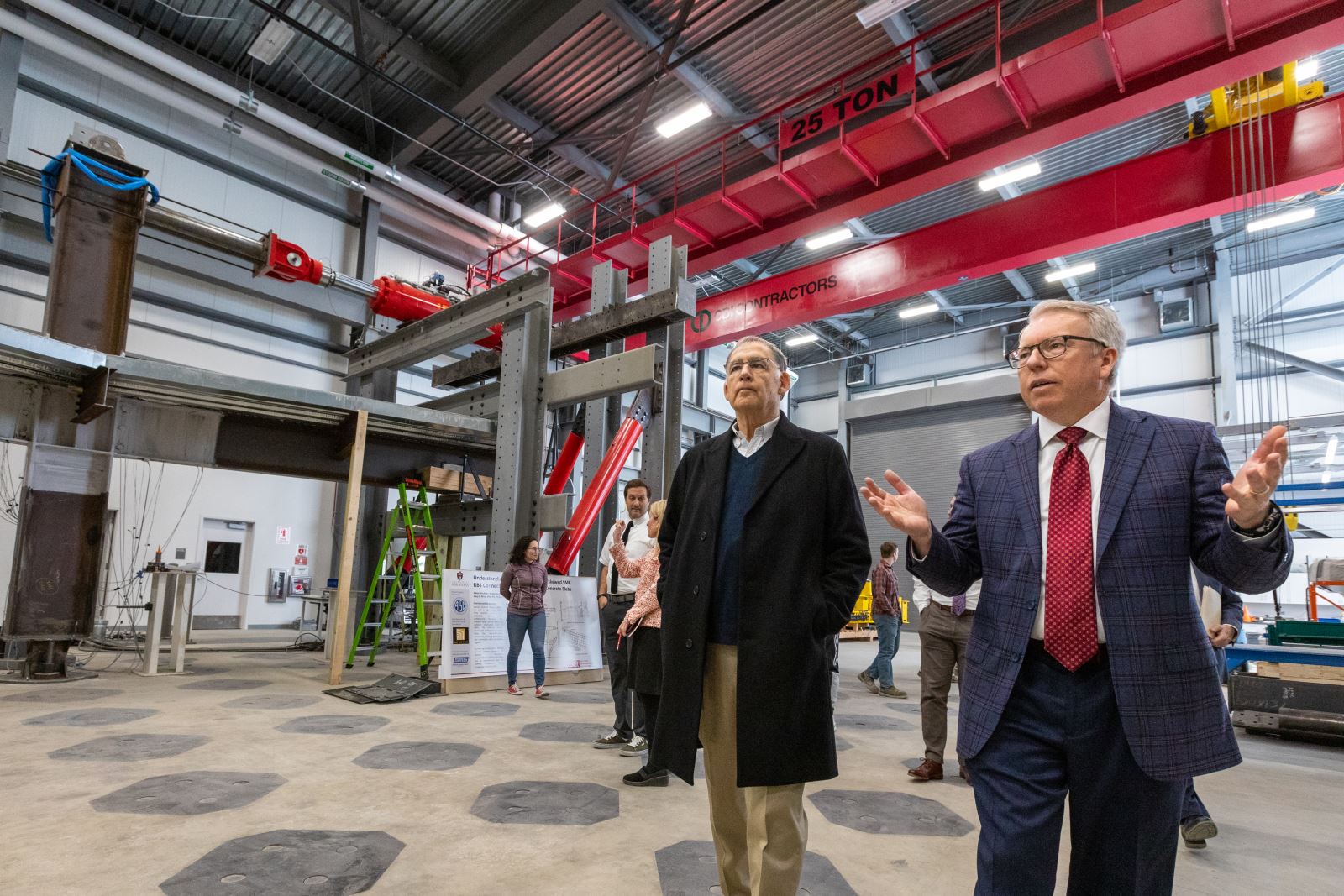
Last year the University of Arkansas hit a record high in research expenditures at $184 million, a figure that places the U of A among the top tier of universities nationally. Research success like this can translate into discoveries that deepen human knowledge, startup companies that drive the economy and inventions that benefit society.
“The university’s commitment to research excellence — a pillar of our 150 Forward Strategic Plan — is evident in the growth of our research expenditures, but this is just the start,” said Charles Robinson, chancellor of the University of Arkansas. “We are building on this momentum by making unprecedented investments in our research infrastructure.”
In addition to securing millions of dollars in grants, the university has invested more than $136 million of its own resources into applied research facilities since 2021.
“Applied research is ‘where the rubber meets the road’ for world-class research universities,” said Margaret Sova McCabe, vice chancellor for research and innovation. “This is where researchers tackle real-world problems and opportunities — often in partnership with industry — and develop solutions and innovations. Life-improving inventions we take for granted like X-rays, e-readers and Google all started at research universities. By targeting applied research, the U of A is aligning its research mission with the economy and society’s needs.”
 Three applied research capital projects in particular — the Institute for Integrative and Innovative Research (I³R), the Multi-User Silicon Carbide Research and Fabrication Facility (MUSiC) and the Anthony Timberlands Center for Design and Materials Innovation — will revolutionize the U of A’s research infrastructure and the university’s positive impact on the state and beyond. The vast majority of the $136 million invested supports the construction of these facilities. They are slated to open in the next 12-18 months.
Three applied research capital projects in particular — the Institute for Integrative and Innovative Research (I³R), the Multi-User Silicon Carbide Research and Fabrication Facility (MUSiC) and the Anthony Timberlands Center for Design and Materials Innovation — will revolutionize the U of A’s research infrastructure and the university’s positive impact on the state and beyond. The vast majority of the $136 million invested supports the construction of these facilities. They are slated to open in the next 12-18 months.
Each facility will feature resources found at few, if any, other research universities. I³R's advanced 3-Tesla Siemen's Magnetom Cima.X MRI scanner will be the only scanner dedicated to research within a 200-mile radius. MUSiC will fill a gap for our nation, allowing companies, national laboratories and universities around the nation to develop low-volume silicon carbide prototypes that go from their labs directly to fabrication. And the Anthony Timberlands Center, with its expansive fabrication center, will become the epicenter of the Fay Jones School’s timber and wood initiatives, including the prototyping of affordable housing.
“We are already gaining recognition for our emerging strength in research areas like biomedical engineering, silicon carbide semiconducting and mass timber construction,” said Sova McCabe. “The truly world-class facilities we have coming online in the next year-and-a-half will build on these strengths and many others to launch the university and its research capabilities forward. I cannot wait to see the benefits for the people of Arkansas and all of society.”
In addition, the university has made significant investments in a cleanroom for the Institute of Nanoscience and Engineering, an addition to the biology greenhouse and toward the construction of the Grady E. Harvell Civil Engineering Research and Education Center.


U.S. Sen. John Boozman visited several applied research facilities while on the U of A campus recently, including the Anthony Timberlands Center for Design and Materials Innovation with Dean Peter MacKeith (left) and the Grady E. Harvell Civil Engineering Research and Education Center with Dr. Micah Hale.
This is the latest in a series of updates in the Division of Research and Innovation. Previous update: Beitle, Davis Leading Key Offices and Initiative
About the University of Arkansas: As Arkansas' flagship institution, the U of A provides an internationally competitive education in more than 200 academic programs. Founded in 1871, the U of A contributes more than $2.2 billion to Arkansas’ economy through the teaching of new knowledge and skills, entrepreneurship and job development, discovery through research and creative activity while also providing training for professional disciplines. The Carnegie Foundation classifies the U of A among the few U.S. colleges and universities with the highest level of research activity. U.S. News & World Report ranks the U of A among the top public universities in the nation. See how the U of A works to build a better world at Arkansas Research and Economic Development News.
Topics
- Architecture
- Engineering
- Research & Innovation
- Points of Pride
- Economic Development
- Technology
- Employment & Careers
- Fay Jones School of Architecture and Design
- College of Engineering
- Facilities
- Office of the Chancellor
- Division of Economic Development
- Division of Research & Innovation
- Institute for Integrative & Innovative Research
Contacts
Andy Albertson, director of communications
Research and Economic Development
479-575-6111,
aalbert@uark.edu